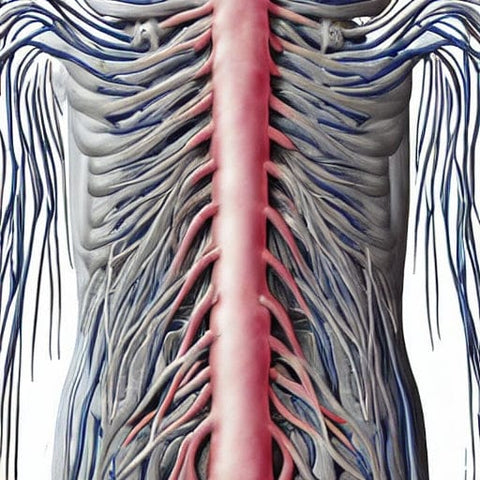What exactly is an EMP?
You could have numerous questions regarding an emp, such as what it is and how it operates, and it's natural to have such queries. The response to the second question will be unique to each individual, but the basic definition of an emp is rather simple: it refers to an electronic gadget that is used for the purpose of communication. It may be something as simple as an iPhone, or it could be something as involved as a gaming system.
An EMP may exhibit a variety of features, such as the following:
- An electromagnetic pulse may be caused by a broad variety of events, such as nuclear explosions, solar flares, or electrical discharges.
- It is possible to categorize an electromagnetic pulse (EMP) according to its strength as well as its duration. An EMP may be anything from a short burst of radiation to a persistent pulse that lasts for several minutes.
- Depending on the magnitude and frequency of the electromagnetic pulse, an EMP may have a broad variety of consequences on electronic and electrical equipment.
- An electromagnetic pulse has the potential to harm or even destroy electronic and electrical devices, such as computers, mobile phones, radios, and power grids, among other things.
- An electromagnetic pulse may pose a risk to national security since it has the ability to interfere with communication and transportation networks as well as inflict extensive damage to essential infrastructure.
Vehicles
An electromagnetic pulse, often known as an EMP, is an unplanned outburst of electromagnetic radiation that has the potential to interfere with electronic systems and potentially inflict damage. It is one of the numerous things that put the safety of humans at jeopardy.
Even while it has been argued whether or not an EMP may do harm to current automobiles, the study shows that it would be difficult to anticipate the worst possible outcome. The magnitude of the blast and the location of the explosion both play a role in determining the consequences of an EMP.
If there was a big nuclear EMP, the area's electrical system would be either destroyed or dispersed. However, a less powerful EMP with less potential energy might result in interference on radio and television.
One other illustration of this would be what an EMP might do to the battery of an automobile. According to the findings of the research, some motors would be rendered inoperable by an EMP. This is due to the fact that the electromagnetic pulse produced by an EMP causes interference with the charging process.
Other instances include the malfunction of solar panels and the destruction of LED lamps. Living off the grid is the most effective approach to protect oneself from EMP. An electromagnetic pulse assault might leave you helpless if you do not have access to other fuels.
Satellite navigation, Bluetooth, and a radio that is based on satellite technology are just some of the modern technological systems found in today's automobiles. They also have access to a greater quantity of computer equipment than was accessible throughout the time these kinds of research were carried out.
Even though there are no clear indications of its efficacy, the research did reveal that an EMP is capable of disrupting some components of the electronics found in current vehicles. Additionally, it demonstrated that some vehicles genuinely turned off while they were under assault.
The consequences of an electromagnetic pulse (EMP) on automobiles manufactured before, throughout, and after the modern period are distinct from one another in a number of important ways. Some types, namely those with electronics that were more sensitive, were more prone to being damaged by an EMP.
Electronic devices
Electronic devices are discrete pieces of equipment that, when powered by an electrical current, carry out a particular operation. A wide variety of tasks may be carried out with the assistance of these apparatuses. They include of audio and video systems, mobile phones, laptop computers, DVD players, pagers, and several other gadgets. Defibrillators are also included.
Electronic devices may be either active or passive, depending on how they operate. A device that regulates the current of electrons or the voltage is referred to as an active electronic component. Resistors, diodes, capacitors, transistors, and integrated circuits are the fundamental elements that make up an electronic system.
Components of an electronic system are considered passive if they do not influence the flow of the electrical current in any way. Inductors, capacitors, and resistors are only a few examples of the several kinds of passive components.
Experiments in the lab were used to validate the work of the engineers who designed various electrical components throughout the development of this technology. Experiments carried out in the laboratory might also identify flaws in the design.
In the beginning of the history of electronics, point-to-point wiring and breadboards made of wood were used. On the other hand, the 1950s saw the development of transistor radios at Bell labs.
The first stages of the development of electronics occurred quite quickly. The accessibility of vacuum tubes, which made it possible to construct radar and television receivers, was a major driving force behind this expansion. The electric telegraph was yet another device that made a significant contribution to the development of electronics.
Research into high voltages and the behavior of electrons has been accomplished via the use of electronics. In addition to that, they investigate the transmission of electrical current. Electricity plays an essential role in all of our daily activities.
Both generators and batteries may be used in the production of electricity. Those who are interested in purchasing an electronic equipment should do their research to ensure that it is reliable and in satisfactory condition before making a purchase.
Several distinct industries contribute to the design process of electronic gadgets. The completion of homework assignments, the payment of bills, and the viewing of movies are all examples of common computer uses. Tablet computers, iPods, answering machines, and mobile phones are some examples of additional electronic gadgets.
Human body
The electromagnetic pulse (EMP) that is the human body is just waiting to be generated. Even though it is surrounded by a protective magnetic field, it is nevertheless susceptible to other types of radiation and may be struck by lightning. The human body may be subjected to sufficient electromagnetic radiation to wreak havoc on its electronics, but the amount of exposure required depends on the frequency of the exposure. This has been an issue for quite some time. A significant electromagnetic pulse (EMP) has the potential to disrupt the functioning of specialist medical equipment, such as pacemakers and other specialized devices, which are often used in humans. To its credit, the United States has both a robust missile program that is adequately financed and an excellent array of missile defense systems, both of which are capable of providing an effective response to strikes of this kind.
A broad variety of electrical items, ranging from medical equipment to vehicles, might be the target of an electromagnetic pulse attack (EMP). The majority of us aren't very skilled at managing electricity, unlike our forefathers, which makes it an ideal target for this sort of weapon because of its versatility. It is possible to lessen the impact of an electromagnetic pulse (EMP) by taking preventative steps, such as enclosing sensitive electronics in a shielded metal box. However, the most effective method is to restrict the amount of radiation to which you are exposed by staying as far away as possible from the generator of the radiation in question. It is possible to cut your exposure by more than 80 percent by using a helmet as a shield. In addition to the potential for physical harm, you might also be exposed to infectious agents that are included in hospital trash.
Even though the human body isn't a very effective electrical conductor, the most powerful electromagnetic pulses (EMPs) may be generated by a combination of magnetism and a wobble in the magnetic field, similar to what occurs in the sun. In response to this kind of danger, the United States military has fielded a fleet of cruise missiles equipped with electromagnetic pulse (EMP) generators as a defense mechanism. If there is one thing that we do not know for certain, it is the question of whether or not developing weapons of mass devastation is a good idea.
Nervous system
When exposed to EMP, the nervous system is one of the organs that is most susceptible to damage. The power density and frequency of the EMP both have a role in determining the extent of the damage that may be caused by the phenomenon. A number of nations are working to perfect the technology necessary to weaponize EMPs.
In this investigation, an EMP was used on a rat model in order to evaluate the effects that it had on the central nervous system. The effects of electromagnetic pulse (EMP) on learning and memory impairment were investigated using this model.
The electromagnetic pulse was generated by the application of a 400 kV/m electric field for a total of 200 pulses. The Morris water maze was used to assess a participant's learning and memory capacities after 24 hours had passed.
The EMP group's hippocampal neurons had an increased number of dead cells that were labeled with PI. It was also noticed that synaptic clefts were blurred, and secondary lysosomes were present. In addition to this, a considerably greater number of neurons with strongly stained nuclei were seen in the dentate gyrus region of the EMP group.
There is a process called ferroptosis that is known to be responsible for causing damage to the hippocampus. On the other hand, it is not quite obvious how the mechanism operates. It is hypothesized that a physical anomaly like this might result in the death of cells. Therefore, blocking ferroptosis could be a useful treatment strategy.
Downregulation of the GSH/GPX4 axis is another component that may be involved in EMP-induced neuronal injury. This factor is one of many that may be involved. Phospholipid hydroperoxides may be detoxicated thanks to these enzymes. It is possible that a major mechanism to boost neurogenesis is an increase in H3 acetylation that is HDAC2-dependent.
The question of how long the neuronal damage might persist is an important one. Following exposure to an EMP, there is a change in the permeability of the blood-brain barrier. In addition, this disturbance has the potential to result in the creation of reactive nitrogen species.
Previous research has revealed that the cellular alterations that take place after exposure to an EMP might have an effect on learning and memory. As a result, it is necessary to locate efficient medical treatment methods in order to repair the harm.
Brain
A significant surge of electromagnetic energy is referred to as an electromagnetic pulse (EMP). It may also be the result of human activity. In any event, it has the potential to ruin electrical equipment.
Electronic equipment, such as computers, radios, and equipment used to charge batteries, may be damaged by an electromagnetic pulse (EMP). They are susceptible to being damaged by a powerful solar storm or an electromagnetic pulse from a nuclear weapon.
An EMP will often have less of an effect on a gadget that is smaller. On the other hand, bigger and more complex machines might be rendered useless by an EMP.
One example is the central processing unit (CPU) of a computer, which has millions of transistors on a single silicon chip. This is more than sufficient to launch a powerful EMP assault, although one with a low frequency.

A more powerful EMP would cause the chips and other components to fail and be destroyed. The currents might be strong enough to cause transformers to overload and power stations to catch fire if the computer is attached to a long cable.
Being well-prepared is the most effective defense against an electromagnetic pulse assault. In an ideal situation, you would have a backup of solid-state electronics, such as torches and backup batteries, in addition to radiation monitoring devices.
Despite this, contemporary devices are very reliant on the distribution network for their power. It is possible that the nature of the strike may leave you stuck in an EMP zone without the ability to charge your battery. This will depend on the specifics of the attack. In addition to it, you will need food and water supplies.
The electromagnetic pulse (EMP) may have different impacts on a person depending on how near they are to the source of the energy. The speed with which the EMP has an effect on you is determined on your distance from the horizon, the frequency of the pulse, and the factors in the atmosphere.
However, those who have experimented with EMPs have discovered that it is feasible to withstand even a moderately powerful EMP assault. Some individuals believe that a hole that is one to two feet deep is enough deep to resist an EMP.
View our selection of some of our emf protection products.
























































Leave a comment